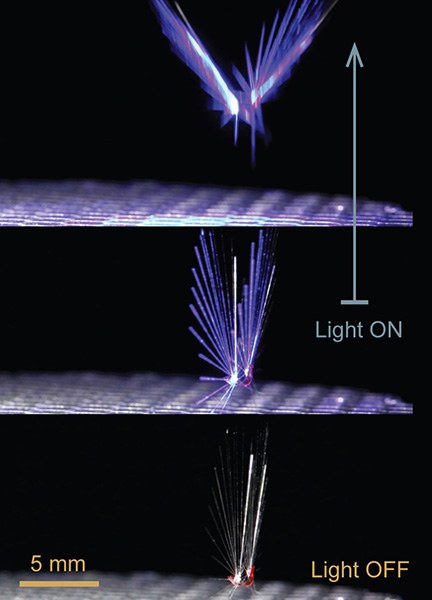Even now, these materials have made robots that can walk, swim and jump. Now, a FAIRY can even fly. FAIRY is the nickname of the Flying Aero-robots based on Light Responsive Materials Assembly program at Tampere University. It flies by wind and is controlled by light, using a soft actuator.
"The actuator is made of light-responsive liquid crystalline elastomer, which induces opening or closing actions of the bristles upon visible light excitation,” explains Hao Zeng, group leader of the project.

Responsive polymer allows the creation of artificial, autonomously operating structures. In dark and calm weather, the fairy stays still. When there is enough light, the structure opens automatically allowing flying in the wind flow. Photo: Jianfeng Yang / Tampere University.
Because of its high porosity (0.95) and lightweight (1.2 mg) structure, it can float in the air and be directed by the wind, while a stable separated vortex ring generation enables long-distance wind-assisted traveling It can even be powered and controlled by a light source, such as a laser beam or LED, and light can be used to change the shape of the tiny dandelion seed-like structure. The fairy can adapt manually to wind direction and force by changing its shape. A light beam can also be used to control the take-off and landing actions of the polymer assembly.
One application they highlight is what most may not expect. Agriculture. Using their FAIRY equipped with GPS and sensors, chemicals could be targeted and steered by light toward specific areas for true big data driven, efficient application of crop protection tools.
For that, they need to better be able to do precision landings on a large scale, but this program is funded until 2026, so progress on that, along with goals like making them easily biodegradable, are in the planning stages.






Comments